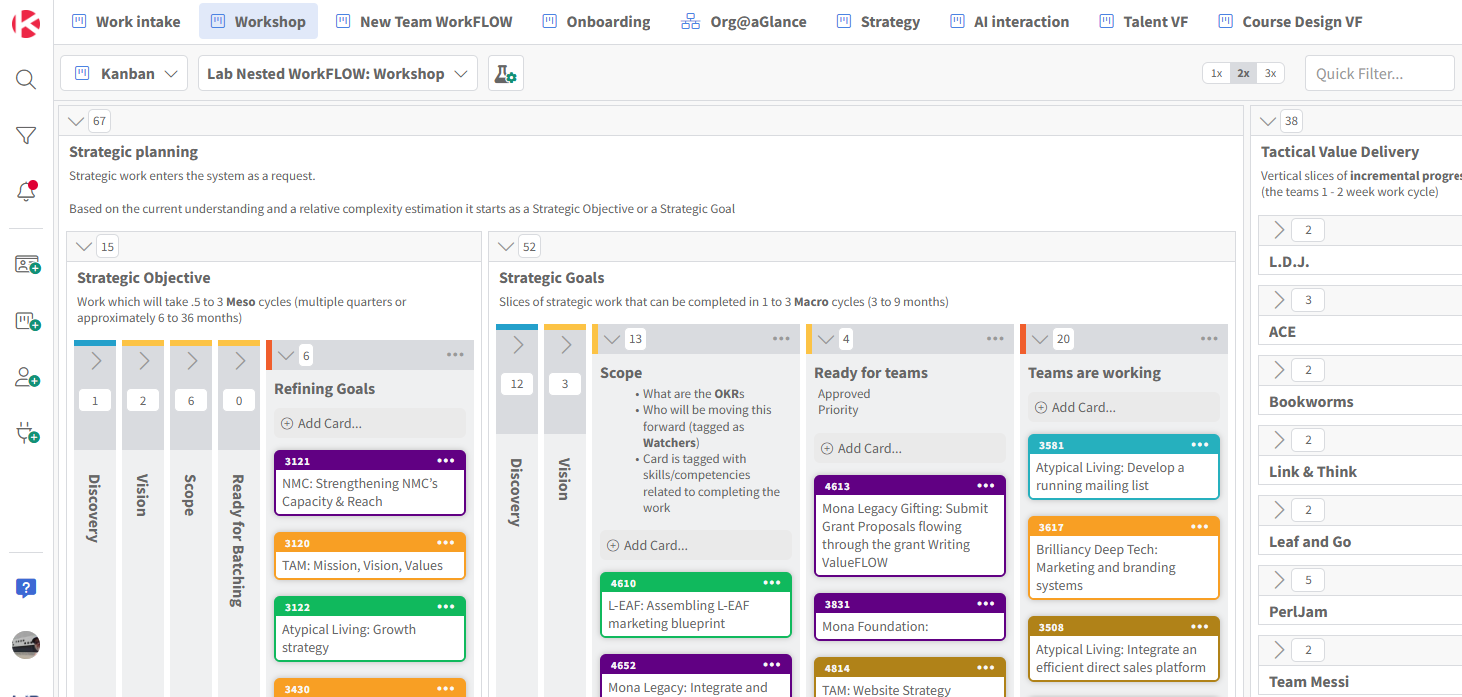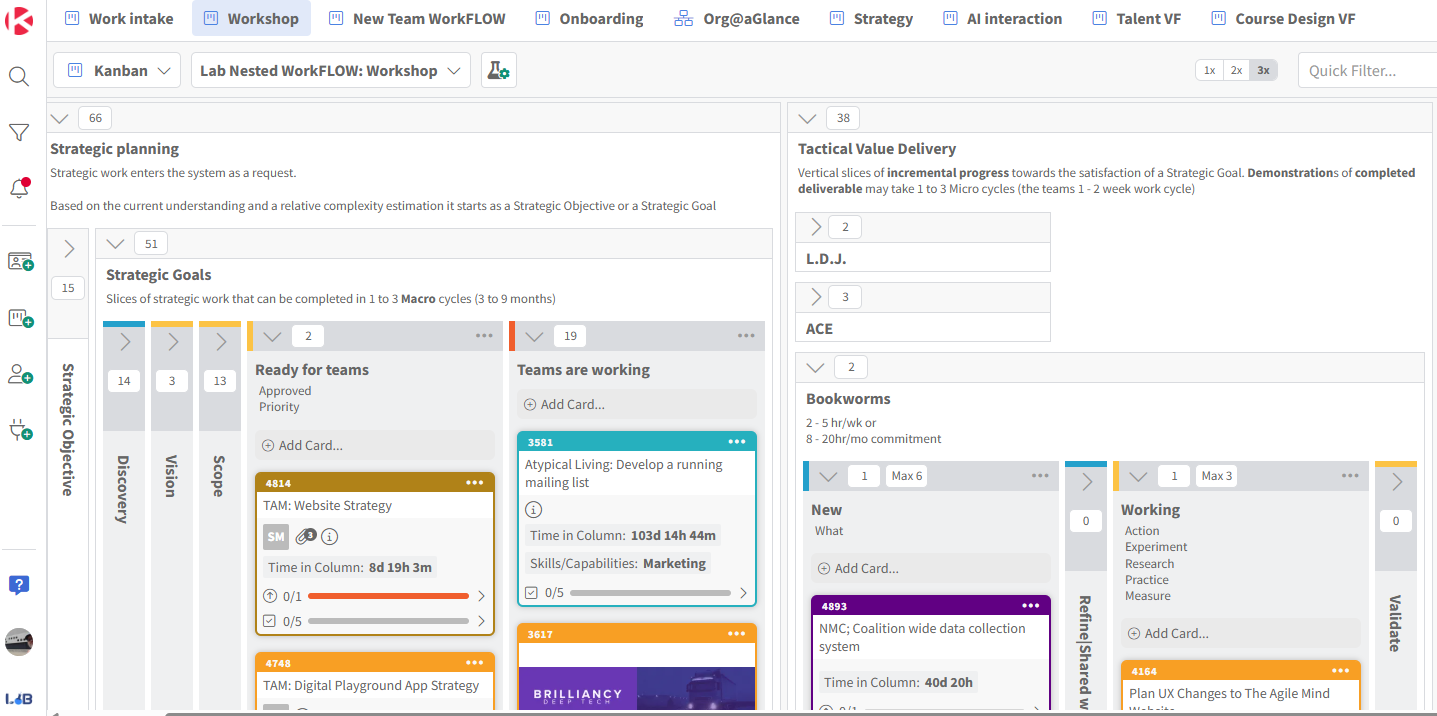From Chaos to Clarity
In the Product Management Early Talent Incubator, students don’t just learn to manage products, they learn to manage complexity. Every team faces ambiguity, shifting priorities, and the challenge of coordinating across roles and stakeholders. What keeps them grounded is the system they build together.
Scoping with Purpose
Each team begins by co-creating an Agile Product Vision, a shared artifact that anchors our work in the users and their needs, business goals, and stakeholder priorities. It’s not just a kickoff exercise; it’s a strategic alignment tool.
“The Product Vision helped us stay focused. When things got chaotic, we could always come back to it and ask, ‘Does this move us closer to solving the right problem?’” - Lab participant, Spring cohort
From there, they build Strategic Goals, which are refined on a Nested WorkFLOW board to flow across our product delivery teams. This board, built and managed by the students using Kanban Zone (www.KanbanZone.com) helps teams to pull deliverables, define dependencies, and surface risks early. It is not just task trackers, it is the map of the team’s strategic vision.
“Nested WorkFLOW gave us a way to zoom in and out. We could see the big picture and the granular parts at the same time.” - Student team lead, Summer cohort
Operating in Kanban Zone
Kanban Zone is where our work lives. It’s where we track progress, manage handoffs, and avoid rework. Each team builds its own WorkFLOW board, tailored to its rhythm. Some use swimlanes to separate discovery from delivery. Others build nested cards to reflect layered priorities.
“Kanban Zone helped us communicate when we were working individually. Everyone knew what was moving, what was blocked, and where they could jump in.” - UX researcher, Fall cohort
The boards evolve with the teams. They use them to run planning, risk management, refinement, facilitate retros, and communicate across functions. They help teams stay aligned without having to be in the same building. And when things shift (as they always do), the board helps to pivot with clarity.
“It wasn’t just about tracking tasks; it was about building a shared understanding of what to do, good enough, when to stop, when something was ready to pull, and when we were done. The board became our team’s second brain, reducing the stress of remembering what to do.” - Strategy intern, Winter cohort
Communicating Across Boundaries
One of the biggest lessons teams learn is that alignment isn’t a one-time event, it’s a continuous practice. The Nested WorkFLOW board helps teams communicate scope and progress to the Product Management teams, stakeholders, coaches, and other teams. They make handoffs explicit, reduce duplication, and surface blockers before they become bottlenecks.
“We used the board to show our stakeholders exactly where we were—and what we needed. It made our updates more strategic, not just status reports.” — Product analyst, Spring cohort
We’ve seen how a well-structured board can turn confusion into coordination. How a shared visual language can bridge roles and reduce friction. And how transparency builds trust, not just within teams, but across the entire lab ecosystem.
“Before the lab, I thought project management was about control. Now I see it’s about clarity and flow.” - Student coach, Summer cohort
Learning to Lead Through Systems
These tools don’t just help teams deliver, they help students build skills. Students learn to lead through systems, not just personality. They learn to design workflows that reflect real-world complexity, and to adapt those workflows as conditions change, adaptive thinking in action.
“The lab taught me how to architect a process that works for people, not just for the product.” - Team facilitator, Fall cohort
We leave the lab not just with deliverables, but with a deeper understanding of how to build alignment, communicate across boundaries, and lead with systems thinking. These aren’t just skills, they’re mindsets we carry into every future team we join.




